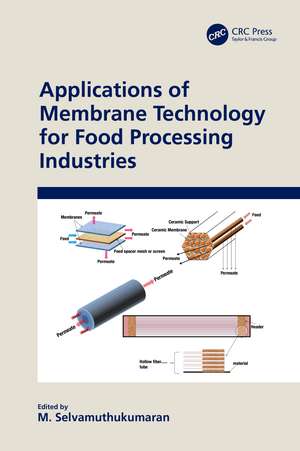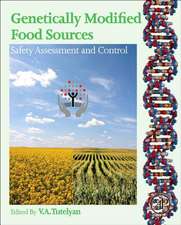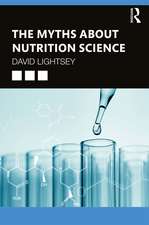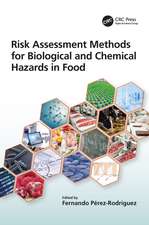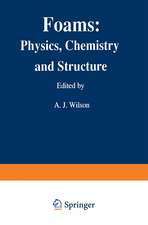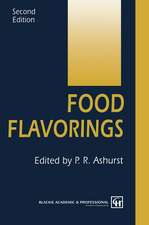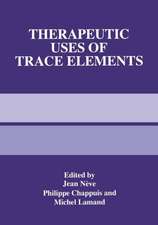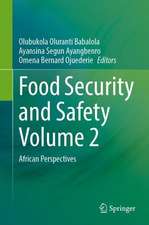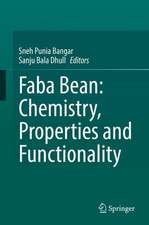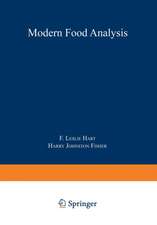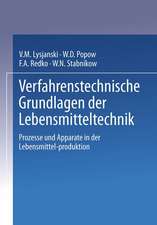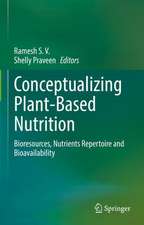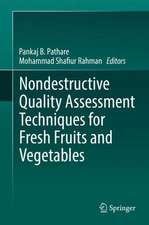Applications of Membrane Technology for Food Processing Industries
Editat de M. SELVAMUTHUKUMARANen Limba Engleză Hardback – 15 oct 2020
Membranes processing techniques are used to help separate chemical components based on molecular size under specific pressure. A great advantage of membrane processing techniques is that it is a non-thermal processing technique, which can retain enormous bioactive constituents to a greater extent. Being a less energy intensive process, this technique is widely used in several food processing industries such as in the clarification of fruit juices and wine; the concentration of milk; the preparation of whey protein concentrate; and water and waste treatment, among others.
Applications of Membrane Technology for Food Processing Industries introduces membrane processing techniques, presenting principles, theory and operational conditions for achieving efficient quality product. It discusses different types of membrane processing techniques viz. reverse osmosis, nanofiltration, ultrafiltration, electro dialysis, microfiltration, pervaporation, including its applications, advantages and disadvantages.
Key Features:
- Deals with the retention of antioxidants by using novel membrane processing techniques
- Includes the application of membrane processing techniques in whey processing
- Explains the method for degumming, dewaxing and decolorization of edible crude oils
- Narrates application of membrane processing techniques in waste water treatment for efficient use
Readers, such as professors, scientist, research scholars, students and industrial personnel, will come to know about the current trends in use of membrane processing techniques for its application in several food processing industries. This book can be a ready reference for the food industrial industry for manufacturing of deacidified clarified fruit juices and wine by using integrated membrane technique approach.
In a nutshell, this book will benefit food scientist, academicians, students and food industrial persons by providing in-depth knowledge about membrane processing of foods for quality retention and also for efficient consumer acceptability.
| Toate formatele și edițiile | Preț | Express |
|---|---|---|
| Paperback (1) | 411.56 lei 6-8 săpt. | |
| CRC Press – 4 oct 2024 | 411.56 lei 6-8 săpt. | |
| Hardback (1) | 1275.08 lei 6-8 săpt. | |
| CRC Press – 15 oct 2020 | 1275.08 lei 6-8 săpt. |
Preț: 1275.08 lei
Preț vechi: 1554.98 lei
-18% Nou
244.06€ • 265.20$ • 205.15£
Carte tipărită la comandă
Livrare economică 21 aprilie-05 mai
Specificații
ISBN-10: 036722691X
Pagini: 274
Ilustrații: 23 Tables, black and white; 44 Illustrations, black and white
Dimensiuni: 156 x 234 x 18 mm
Greutate: 0.53 kg
Ediția:1
Editura: CRC Press
Colecția CRC Press
Public țintă
Professional ReferenceCuprins
About the Editor xi
Contributors xiii
1 Introduction to Membrane Processing 1
Carole C. Tranchant and M. Selvamuthukumaran
2 Frequently Used Membrane Processing Techniques for Food
Manufacturing Industries 45
Ulaş Baysan, Necmiye Öznur Coşkun, Feyza Elmas, and Mehmet Koç
3 Theoretical Approach behind Membrane Processing Techniques 97
Komal Parmar
4 Deacidification of Fruit Juices by Electrodialysis Techniques 119
M. Selvamuthukumaran
5 Clarification of Fruit Juices and Wine Using Membrane Processing Techniques 129
Ismail Tontul
6 Microfiltration Techniques: Introduction, Engineering Aspects,
Maintenance, and Its Application in Dairy Industries 155
M. Selvamuthukumaran
7 Applications of Membrane Technology in Whey Processing 167
Kirty Pant, Mamta Thakur and Vikas Nanda
8 Membrane Technology for Degumming, Dewaxing and Decolorization
of Crude Oil 201
M. Selvamuthukumaran
9 Retention of Antioxidants by Using Novel Membrane Processing Technique 211
Rahul Shukla, Mayank Handa, and Aakriti Sethi
10 Application of Membrane Processing Techniques in Wastewater
Treatment for Food Industry 229
Rahul Shukla, Farhan Mazahir, Divya Chaturvedi and Vidushi Agarwal
Index 255
Notă biografică
Descriere
Membranes processing techniques are used to help separate chemical components based on molecular size under specific pressure. A great advantage of membrane processing techniques is that it is a non-thermal processing technique, which can retain enormous bioactive constituents to a greater extent. Being a less energy intensive process, this technique is widely used in several food processing industries such as in the clarification of fruit juices and wine; the concentration of milk; the preparation of whey protein concentrate; and water and waste treatment, among others.
Applications of Membrane Technology for Food Processing Industries introduces membrane processing techniques, presenting principles, theory and operational conditions for achieving efficient quality product. It discusses different types of membrane processing techniques viz. reverse osmosis, nanofiltration, ultrafiltration, electro dialysis, microfiltration, pervaporation, including its applications, advantages and disadvantages.
Key Features:
- Deals with the retention of antioxidants by using novel membrane processing techniques
- Includes the application of membrane processing techniques in whey processing
- Explains the method for degumming, dewaxing and decolorization of edible crude oils
- Narrates application of membrane processing techniques in waste water treatment for efficient use
Readers, such as professors, scientist, research scholars, students and industrial personnel, will come to know about the current trends in use of membrane processing techniques for its application in several food processing industries. This book can be a ready reference for the food industrial industry for manufacturing of deacidified clarified fruit juices and wine by using integrated membrane technique approach.
In a nutshell, this book will benefit food scientist, academicians, students and food industrial persons by providing in-depth knowledge about membrane processing of foods for quality retention and also for efficient consumer acceptability.
